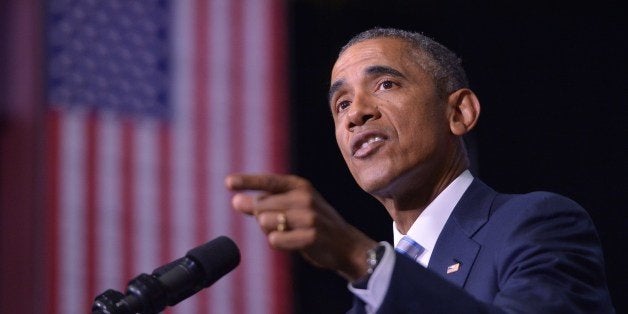
Putting Obama's free community college plan into action could cost $60 billion over the next decade. But the economic boost it provides could be even greater.
If enacted, the proposal will offer two tuition-free years of community college to students who maintain a C+ grade-point average and attend classes at least half-time. The federal government would cover 75 percent of the cost, with participating states covering the rest.
Studies find that community college investments pay themselves back to the government many times over and vastly raise students' earning potential. Nationwide, community colleges are already a major part of the U.S. economy, contributing an estimated $809 billion in 2012, according to a study by the Economic Modeling Specialists Intl. On the local level, community colleges mean better jobs, higher wages and more spending power for graduates, as well as a larger skilled workforce for local employers.
"Rising levels of education yield a more skilled workforce, which is a crucial driver of economic growth," Shai Reshef, founder and president of University of the People, a nonprofit online university, said in a recent interview with The Washington Post. "I think Obama’s proposal is an effort to revive education as one of the drivers of economic growth, and this is a good thing."
California, home to the largest community college system in the country, exemplifies the kinds of economic gains Obama's plan could bring.
A recent analysis found that a 2 percent increase in people with an associate’s degree and a 1 percent increase in people with a bachelor’s degree would result in $20 billion in additional economic input, $1.2 billion in additional state and local tax revenues every year and 174,000 new jobs.
For every dollar spent on economic and workforce development programs at community colleges, there is a $12 increase in California’s business income and employee wages, according to the Foundation for California Community Colleges. Furthermore, the state receives a $4.5 net return for every dollar it invests to get students through college.
Community colleges have come to serve as an affordable stepping stone for California students who go on to pursue bachelor’s degrees. More than half of California State University graduates started at community colleges, as did nearly a third of University of California graduates. The state’s community colleges are major training centers for some of the most in-demand careers. Over 70 percent of the state’s nurses graduated from the system. It also provides credentials to 80 percent of the state’s firefighters, law enforcement officers and EMTs.
Though the state's community colleges are the cheapest in the nation, severe budget cuts limited access to these opportunities and brought enrollment to an all-time low in 2013. Meanwhile, students have flocked to for-profit colleges, which offer less competition to get into courses and ply students with false promises about their graduates’ success rates. Nationally, the rate of default on student loans is higher at for-profit colleges than it is at public and private nonprofit institutions. The free community college plan could funnel students away from predatory institutions.
Maxwell Strachan contributed to this report.
